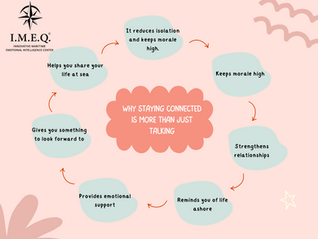SAILING THE PATHWAY TO RESILIENCY
- Penelope Robotis Psychologist Psychotherapist
- Aug 26, 2019
- 2 min read
Updated: May 31, 2021
Resiliency has been recognized as an important constuct to understanding why some people can go through adverse events and bounce back , while others suffer debilitating effects including the onset of post traumatic stress disorder. According to the experts in the field, exposure to potentially traumatic events does not itself predict future suffering, what has predictive value is the potential of the negative event to be traumatic which is contingent to the individual’s perception and meaning of the event ( G.Bonnano & A.D. Mancini,2009) .
Resilience is the process of adapting well in the face of adversity, trauma, tragedy or significant stressful events. Most people cope effectively to adversity, while others have a difficult time recovering and returning to functional levels. Response variation to negative events have such differences have been accounted for by individual differences in perception, positive emotions, flexible adaptation mechanisms including repressive coping, which is defined as “marked avoidance of threatening negative stimuli” which can allow the person to employ more active problem focused coping mechanisms ( Hock & Krohne, 2004) .
A number of factors contribute to resiliency including:
Positive , caring and supportive relationships
The capacity to make realistic plans and realize them
Effective communication skills and problem solving coping mechanisms
Positive emotional experiences, including laughter which traditionally had been interpreted as unhealthy denial . However, research has shown that positive emotional experiences can reduce levels of stress following loss ( Tugade & Fredrickson,2004).
Positive memories and social support ; in fact lack of social support is among the strongest predictors of PTSD following exposure to trauma (Brewin et.al,.2000).
Developing resilience is a personal journey therefore not all skills and techniques will be equally helpful for all, remember that individual differences, cultural differences, perceptual differenced mitigate our response to negative events as well as our adaptation to them .
Ways to Build Resilience
Engage in warm and caring interpersonal relationships
Avoid seeing crisis as insurmountable problem, although we can not change the events, we can change our perception, the way we interpret and respond to these events.
Practice acceptance: Acceptance empowers us to focus on circumstances that we can alter instead of feeling stuck in situations that we can not change
Develop realistic and attainable goals that are consistent with the direction you want to go in life.
Trust your inner voice and feel confident in your problem solving abilities
Practice self growth ; some people find themselves to have grown as result of the experienced event or tragedy.
Engage in positive behaviors and activities that are relaxing and joyful
Embrace meditation, spirituality : such practices often help people to find hope again and build connections
Maintain an optimistic outlook in life: visualize what you want in the future rather than ruminating about what happened in the past.
Resilience involves flexibility in thinking, openness to self awareness and letting go of negative feelings .
In continuing your journey to healing from trauma and negative events , it is important to remember, that nurturing yourself, practicing self acceptance and rebuilding trust in life is a process that requires time, patience and optimism
.





































































































Comments